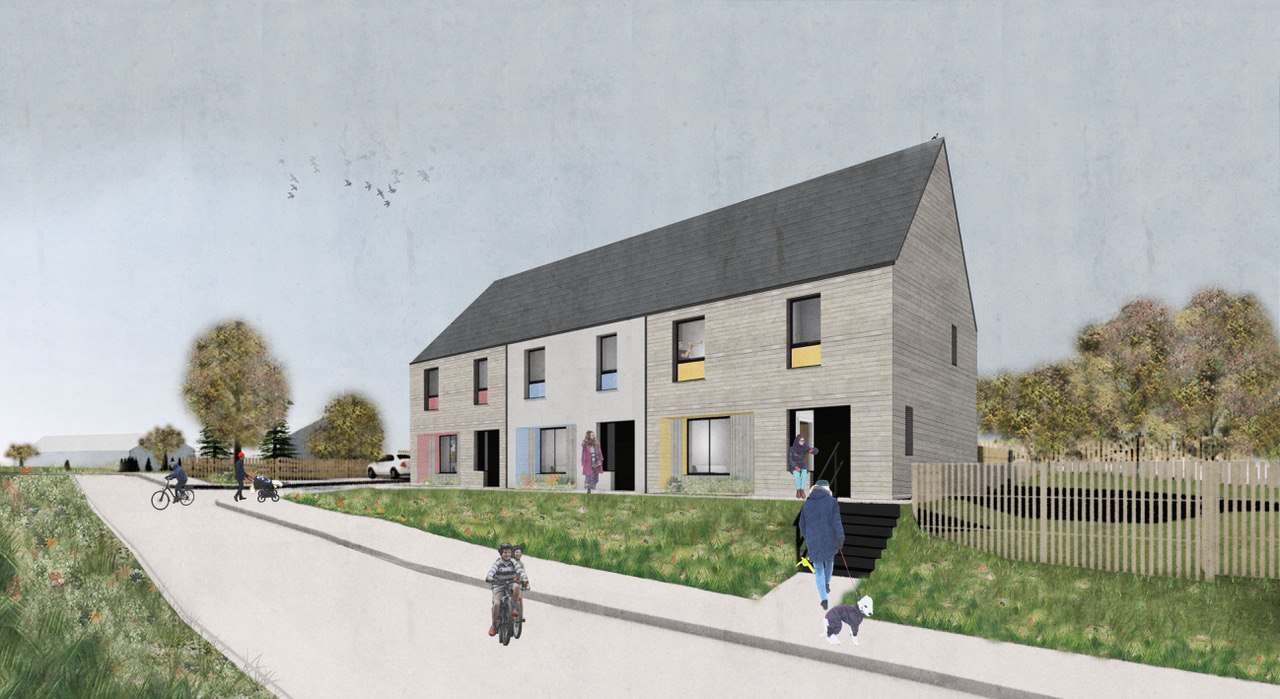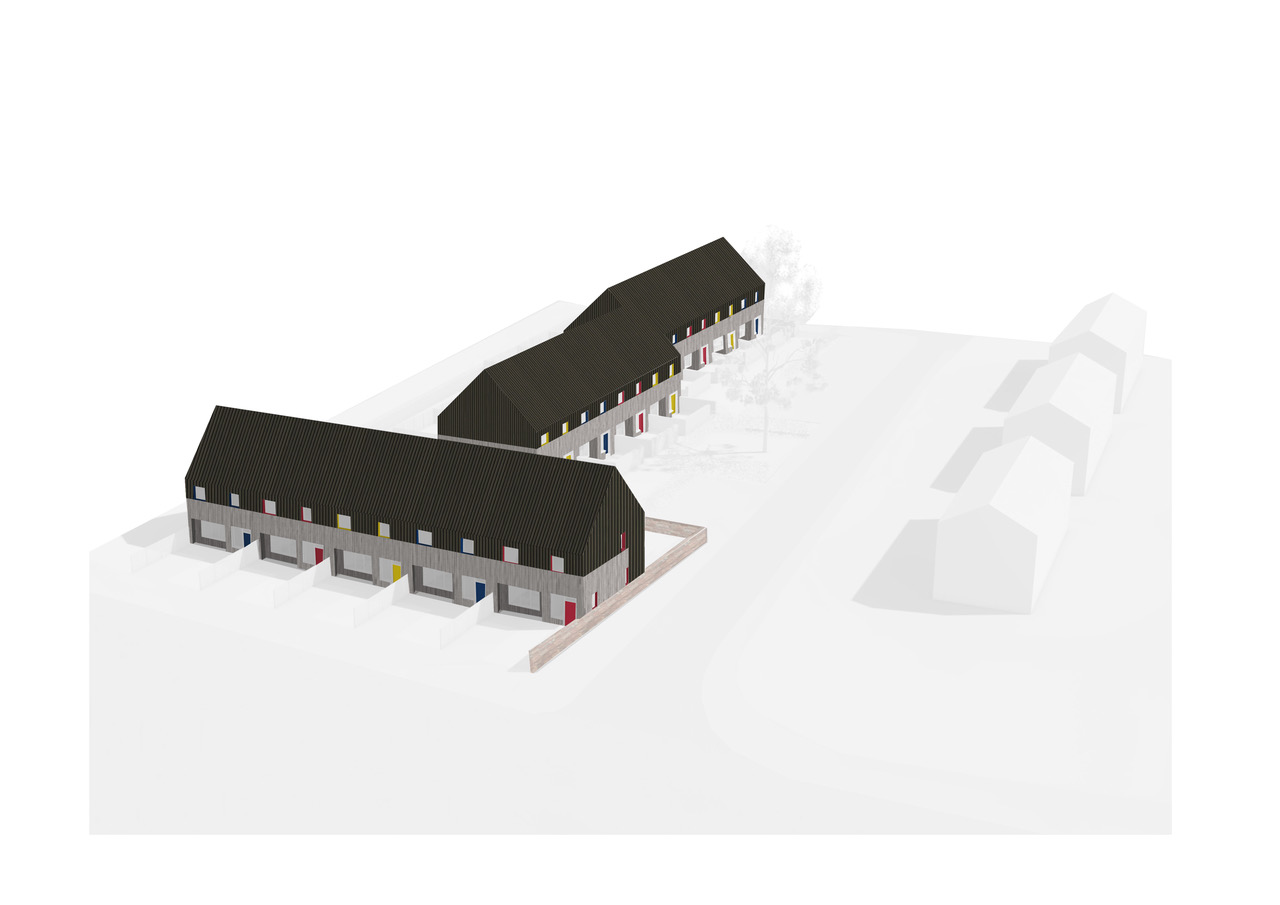Funding awarded for new Scottish Passivhaus initiative
Leading architects, designers and builders are to partner with researchers at The Glasgow School of Art (GSA) to develop a specific Scottish approach to Passivhaus.
The Mackintosh Environmental Architecture Research Unit (MEARU) at GSA, together with John Gilbert Architects, Stewart & Shields and Design Engineering Workshop, have secured three-year funding from Innovate UK through a Knowledge Transfer Partnership (KTP).

A Passivhoos housing project in Scottish Borders
Passivhoos is a range of social housing types that meet the international Passivhaus standards, as well as the Housing for Varying Needs and Scottish Government budget benchmarks.
It has been developed specifically for Scottish housing providers by John Gilbert Architects, Stewart & Shields contractors and Design Engineering Workshop, and is available in a variety of configurations to suit many different sites.
This partnership will deliver types of housing that will bring the long-term benefits of Passivhaus construction to Scottish social housing. It also aims to encourage the take up of genuinely low-energy homes and help eliminate fuel poverty.
Now with £272,380 of KTP funding, the Passivhoos team will be able to work in partnership with experts in MEARU, and to benefit from their wide range of skills and knowledge in low energy design. MEARU has significant expertise in the areas of environmental performance, Building Information Models and communication technology – all of which will be available to Passivhoos.

The Passivhoos team being awarded the KTP (from left) Dr Gerry Black, KTP advisor; Gary Leonard, contracts manager, Stewart & Shields; Mark Sinclair, director, Design Engineering Workshop; Matt Bridgestock, director, John Gilbert Architects; Professor Tim Sharpe, Glasgow School of Art (MEARU); Janice Foster, researcher, Glasgow School of Art (MEARU); Elaine Wallace, deputy manager at West of Scotland KTP Centre
Matt Bridgestock of John Gilbert Architects said: “We are delighted to be working on our second KTP with The Glasgow School of Art, and really focusing on eliminating the performance gap and fuel poverty in new housing. In particular, we aim reduce cost, improve the supply chain and bring innovative architecture to new social housing.”
Mark Shields of Stewart & Shields said: “We are delighted to be working to bring the Passivhaus standard of comfort and low energy to the social housing market. We’re looking forward to working with John Gilbert Architects and Design Engineering Workshop to deliver these innovative new homes.
“This award is a significant step in developing the Passivhoos model, improving buildability, better cost certainty and bringing us closer to eliminating the performance gap in our housing delivery.”

Professor Tim Sharpe of The Glasgow School of Art added: “MEARU is very pleased to be continuing its relationship with John Gilbert Architects and the Passivhoos team on a project of critical importance to Scottish Government targets for new homes and climate change.
“Collaborations such as this are tangible a demonstration of how the skills and expertise within Glasgow’s Art School can be applied to help improve the built environment with the many benefits that this can bring to both health and sustainable living.
“We will bring our experience to the table to help enhance the environmental performance of Passivhoos addressing issues such as energy consumption, indoor environmental quality, usability and maintenance.”
The KTP funding will bring practice and research knowledge in low energy building performance together – particularly in the areas of Passivhaus standards and BIM modelling – to create real-world housing solutions that meet a range of criteria for acceptability within the social housing market. These include cost, compliance, comfort, user acceptability, reliability and performance.
The partnership will also fund a new employee for three years from spring 2019, advertisements for this vacancy will be circulated in the next few weeks.









